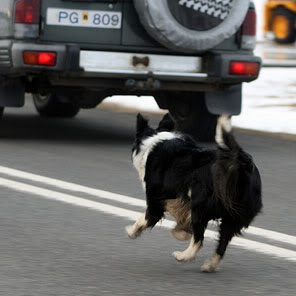 Cars are the second highest expense for households in the US. CityLab dove into the recent data from the Bureau of Labor Statistics that breaks down how Americans spend their money looking at various income brackets. And it noted that “something screwy is going on with transportation.” Middle-class Americans in particular spend a higher percentage of their total household expenditures on transportation. And it’s not because they are spending it on bus or subway fare. They spend more on gas, maintenance, insurance and other car related expenditures.
Cars are the second highest expense for households in the US. CityLab dove into the recent data from the Bureau of Labor Statistics that breaks down how Americans spend their money looking at various income brackets. And it noted that “something screwy is going on with transportation.” Middle-class Americans in particular spend a higher percentage of their total household expenditures on transportation. And it’s not because they are spending it on bus or subway fare. They spend more on gas, maintenance, insurance and other car related expenditures.
A number of factors are believed to be the cause: urban sprawl, affordability of real estate in cities, inadequate investment in mass transit and simple car dependency. The rich have more choices in where they live and can live closer to work, for example. Lower income people rely more on mass transit (that doesn’t mean they have shorter commutes, but it does add up to less than owning a car.) This isn’t even factoring the social cost of our reliance on the car.
If you pair that information with recent data from Boston University’s DARTE (Database of Road Transportation Emissions), we see a connection. Urban metro areas are continuing to see an increase in the levels of CO2 emissions. Urban metro areas were responsible for 80% of the increase in vehicle CO2 emissions since 1980, and 63% of total vehicle CO2 emissions in 2012. Sounds logical, right? More people; more cars. But that rise in emissions is attributed to the number of people commuting via their cars. The cities with the most visible decreases in emissions were those that were already densely populated, like Boston and New York. Cities that have more connected suburbs to their cities through mass transit see less of an impact.
We cannot hope to reduce emissions unless we provide more convenient, safe and viable alternative means of transportation. (Walking, by the way, produces 0 CO2 emissions.) And providing those alternatives also eases the burden that the bulk of Americans spend on gas, maintenance and insurance for their cars.
This isn’t anti-car. I walk when I can, but I also drive and ride the bus. It’s about reducing the reliance on the car. Make streets safe for pedestrians. Design streets so that people have things to walk and bike TO. Start riding the bus sometimes and encourage your friends to do so too. Participate in public discussions about future plans for our mass transit system, new development, pedestrian pathways and bike paths. Using your car less is better for our health, our communities and our environment.



No Comment